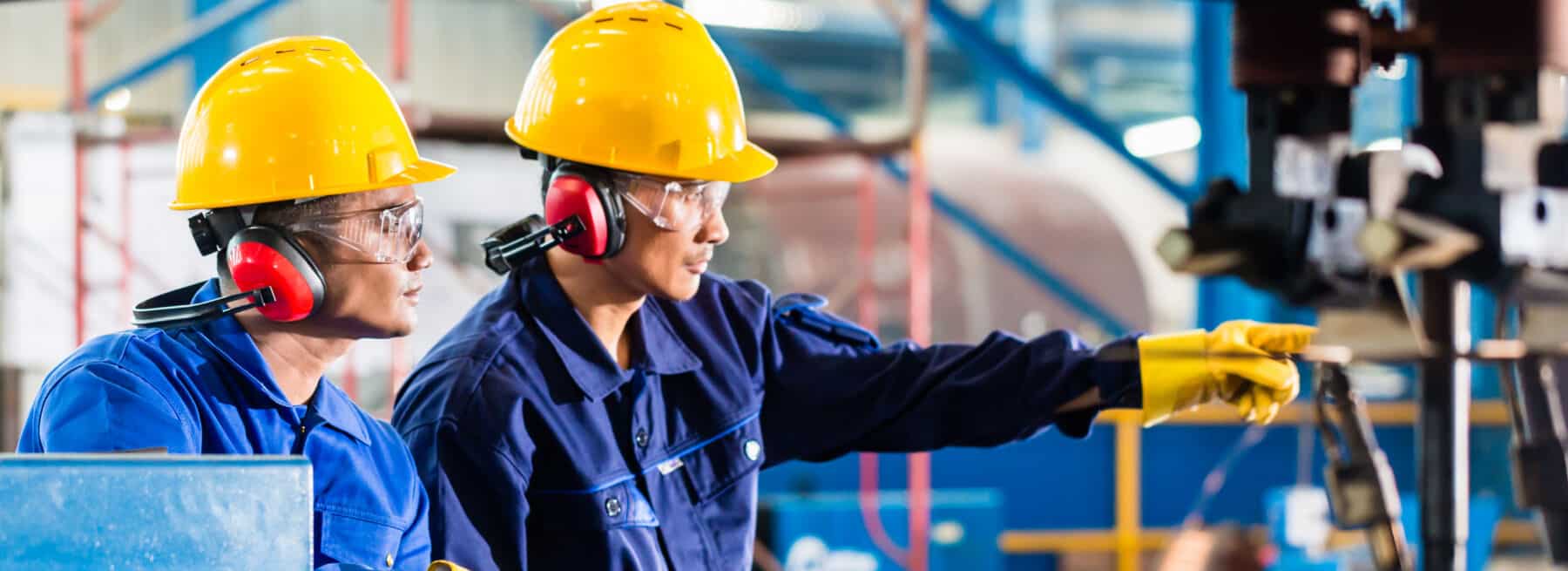No doubt, safety must be a crucial part of jobs in the manufacturing industry. Unfortunately, the industry deals with a few challenges, and it may not maximize its safety as well as it could. If safety isn’t a top priority, then manufacturers could potentially deal with the following:
- Fatigued workers who are more likely to make mistakes.
- Workers who do unplanned work, which drives up overtime costs.
- Workers who get injured on the job, which affects healthcare costs.
- Lack of workers due to workforce shortage and injuries.
These disrupt operations. When they do, it can have calamitous financial consequences for the manufacturing facility’s bottom line and the supply chain. Considering manufacturing authorizes spending millions of dollars in raw materials, staffing, machinery, and technology, leaders need to understand all the risks that can affect assets, finances, operations, and brand reputation.
Manufacturing facility leaders must strike a balance between safety measures and operational efficiency. Poorly implemented safety protocols can affect productivity, encumber innovation, and increase costs. Thus, effective safety strategies should be integrated seamlessly into the manufacturing process. They must find a way to enhance safety without sacrificing efficiency.
Fortunately, technology can take on a heavy load to help with safety and security. Manufacturing facilities that invest in technology can mitigate risks. At the same time, they can improve safety and security.
With the right technology, it’s possible to find ways to make continuous improvements to be more efficient with the resources the facility has. Here are the three top ways proactive technology helps manufacturing facilities reduce safety and security risks.
1. Avoids the Cost of Fatigue Management
Twelve-hour days and evening shifts have higher accident and injury rates according to the Occupational Safety and Health Administration (OSHA) resource on worker fatigue. The resource indicates that injury rates are 18% higher during evening shifts and 30% higher during night shifts compared to day shifts.
Furthermore, OSHA indicates that working a 12-hour shift increases the risk of injury by 37%. These come with increased healthcare costs for employers. Fatigue-related and health-related lost productivity costs approximately $136.4 billion every year.
Worker fatigue is a serious problem, especially during a labor force shortage. With fewer workers available, the ones working must fill in the gaps. Per a report from the U.S. Chamber of Commerce, the durable goods and manufacturing industry has only filled 55% of the jobs. This amounts to more than 600,000 unfilled jobs.
Many experienced workers are retiring and fewer people from the younger generations are considering manufacturing careers. It’s vital to take care of the current workers to prevent losing them to injuries. Due to the shortage, management is not taking advantage of long-time workers’ experience to have them share knowledge with new employees.
In short, manufacturing facilities continued to do a lot more with a lot less. Worker fatigue is a problem. If one worker is fatigued, they could get sick or injure many others. It’s a worrying trend that leads to higher risks of fatigue and burning out.
Today, companies can use Internet of Things (IoT) technology to monitor worker fatigue and receive a notification any time someone is at risk. Collecting this real-time information helps management send home anyone who could be in danger due to fatigue before anything happens.
For example, technologies like the Cat Smartband can detect potential worker fatigue. It monitors the worker’s sleep and wake periods. This data creates fatigue reports to alert management to a potential safety risk that can be prevented.
Workers may not be paying attention to their surroundings. They may not notice heavy equipment heading their way. The heavy equipment operator may not realize they’re close to another worker.
Another technology is Caterpillar’s Cat MineStar Detect. Workers can insert RFID tags into their personal protective equipment (PPE) like pants, shirts, safety hats, vests, and boots. Any time the equipment and worker come close together, the tags would send a proximity warning.
2. Cuts Unexpected Work Risks
It’s tempting to skip over the planning and scheduling process. However, it could lead to hazardous situations. It puts the manufacturing facility into reactive mode. They may forget to schedule a safety monitor or bring in a trained electrician on the project.
Technology like the previously mentioned fatigue alert IoT lets management know where all personnel are located. These apps can track everyone on the site by skill, count, and vendor. This ensures the facility has the right people in the right place and at the right time.
They’ll also be able to identify safety gaps in the facility as well as track equipment use. Staying on top of equipment status ensures that it’s regularly maintained and shut down properly.
3. Tracks All Personnel
A facility can have hundreds of workers. It’s impossible to track them all using a manual setup. Employees may be racking up a lot of overtime, which puts the facility at risk for unsafe situations.
Manufacturing facility safety and security technology can stay on top of all personnel that enter the property. Sometimes workers don’t swipe their badges to enter the facility. Someone else may have let them in or they just entered right behind another person. It’s important to know how many workers are in the facility and how long they’ve worked.
Before implementing technology, it’s important to understand it’s not something you can just bring in to create a safer manufacturing facility. Training is key.
Prioritize Training
Even with all the right technology in place, workers must undergo training. They need to know why they need to use their badges to check in instead of following someone into the facility. These are things technology can’t control. The training should address overtime and the need to limit it. Overtime isn’t meant for everyday use.
Manufacturing facilities with high safety track records credit their success to daily safety training or briefings. These sessions serve as valuable opportunities to reinforce safety protocols, share any relevant updates, and address specific safety concerns. The consistency of these meetings contributes significantly to maintaining awareness of safety practices among workers.
A comprehensive training program should incorporate hands-on demonstrations for equipment inspection and tool preparation. Employees must be well-versed in the correct procedures for equipment setup, operation, and shutdown. It underscores the importance of following these steps for their safety and the safety of their colleagues.
Integral elements of the training regimen include clear guidance on the proper use of personal protective equipment (PPE) and gear tailored to various activities. Avoiding assumptions about workers’ knowledge is crucial to prevent unsafe practices. These procedures need to be regularly communicated. Repetitive exposure to communications on safety matters reinforces these essential protocols.
Daily training sessions emerge as a potent and direct strategy for mitigating danger and risk in industrial facilities. By prioritizing safety every day, managers empower their teams with the knowledge and awareness required to navigate potential hazards, fostering a workplace where safety is a requirement and an intrinsic part of the daily routine.
Monitor the Manufacturing Facility
Despite training, workers will still make mistakes. How do you overcome this? By monitoring the manufacturing facility. Think of it as adding another layer of safety and security. Video surveillance with remote monitoring can be a cost-effective solution.
You might think the use case for video cameras is limited to security. But they’re valuable in helping mitigate health and safety risks. Video surveillance with monitoring becomes a proactive tool when it consists of video analytics and trained monitoring operators.
Video analytics scans all the cameras to find any problems. Once it identifies something suspicious, it can notify the trained monitoring operator who can investigate. If there is an issue, then the monitoring operator can respond appropriately to the scenario.
How they respond depends on what they see. If it’s an intruder, then they could communicate with them over an on-site speaker and issue a warning. If the suspect ignores the warning, then they can call the police and have them head to the facility. The monitoring operator is not at the facility. That’s another benefit. Their lives are never in danger. This helps ensure they respond properly.
They have no relationships with the onsite workers, so they never worry about worker backlash. Monitoring operators can watch for unsafe practices and send the video clips to management. The video clips can tell the story of what’s happening. Companies can use these video clips in training to show the right way and the wrong way to operate equipment or store something hazardous.
The integration of video surveillance with remote monitoring, video analytics, and trained monitoring operators can be more affordable than most people realize. Organizations that work with a company like Stealth Monitoring often see a return on investment within months. This technology and service helps boost safety, deter crime, increase operational efficiency, and provide actionable insights.
Manufacturing facilities that use video surveillance with monitoring can experience higher productivity rates while reducing risks of injuries and crimes. To discover the advantages of proactive security, check out the manufacturing security videos. For more information about integrated security solutions with video surveillance and remote monitoring, contact us.
Texas Private Security License Number: B14187
California Alarm Operator License Number: ACO7876
Florida Alarm System Contractor I License Number: EF20001598
Tennessee Alarm Contracting Company License Number: 2294
Virginia Private Security Services Business License Number: 11-19499
Alabama Electronic Security License # 002116
Canada TSBC License: LEL0200704

